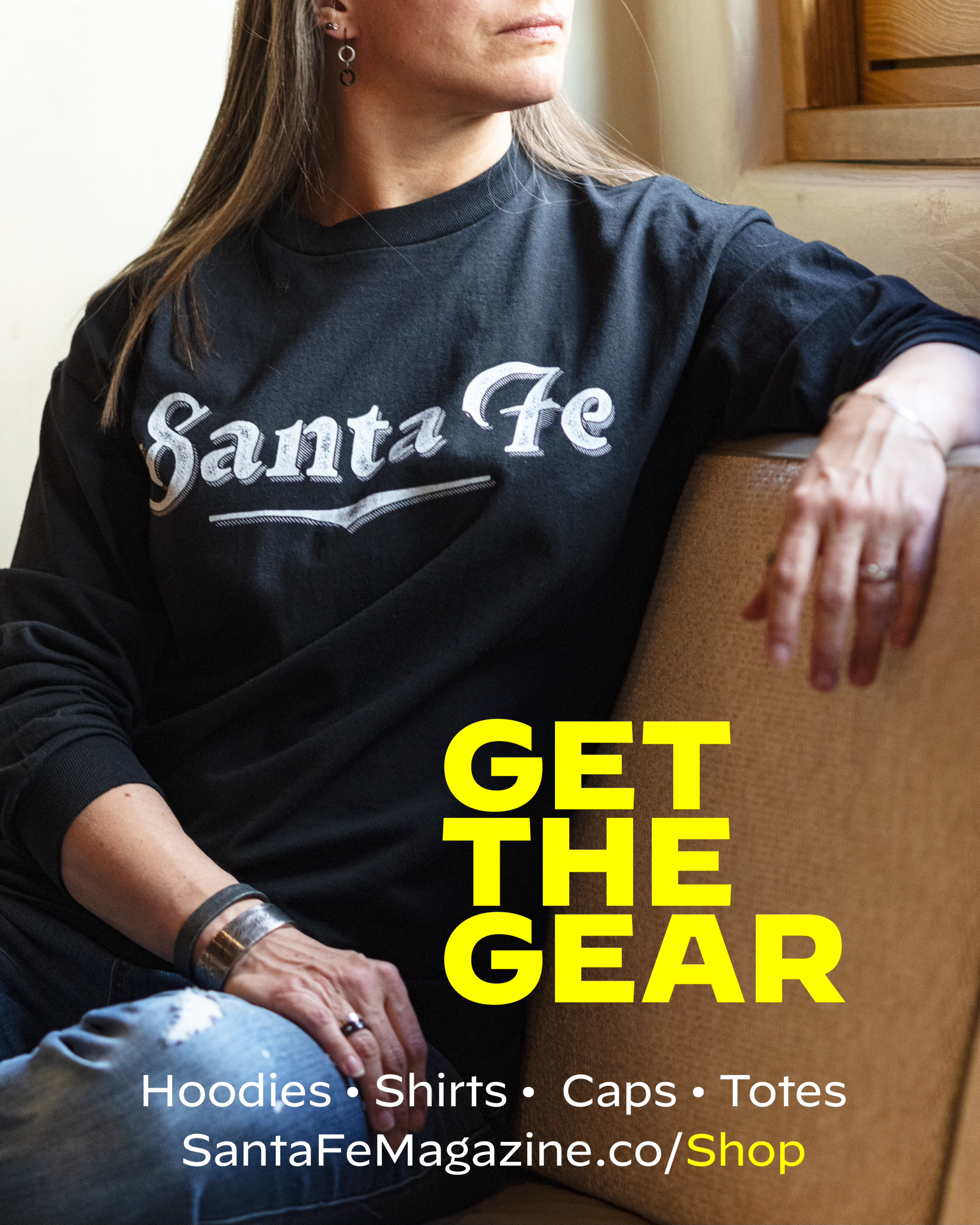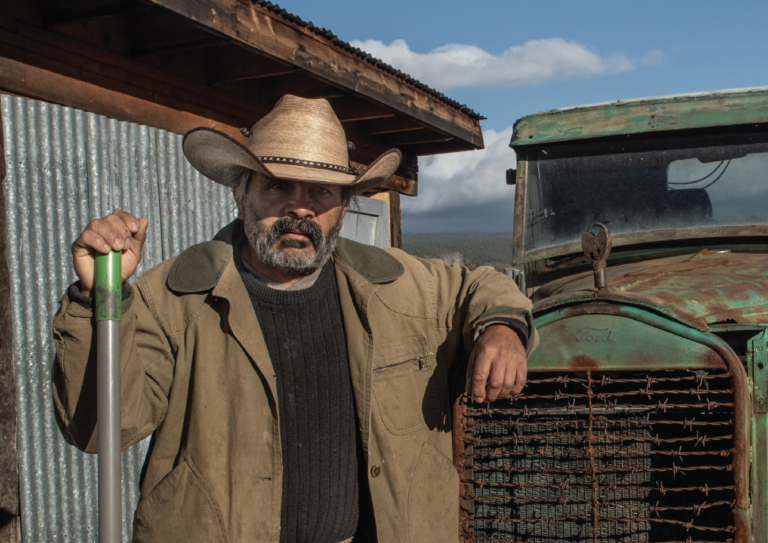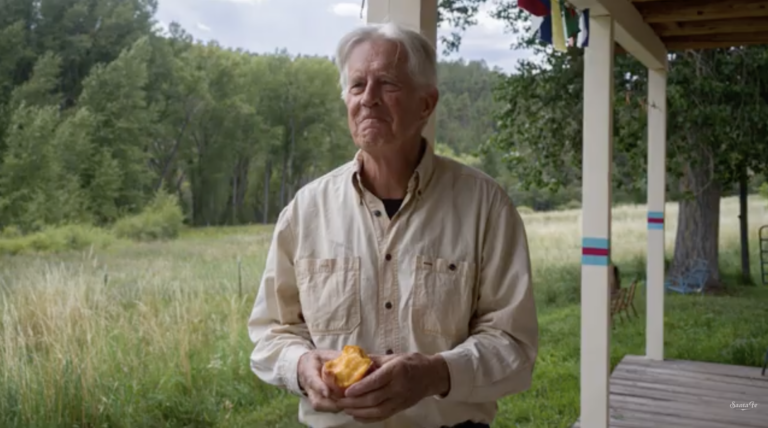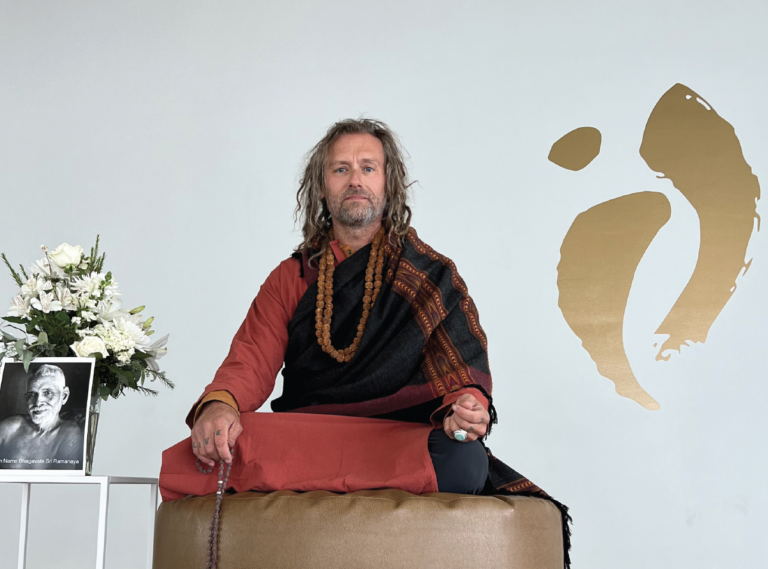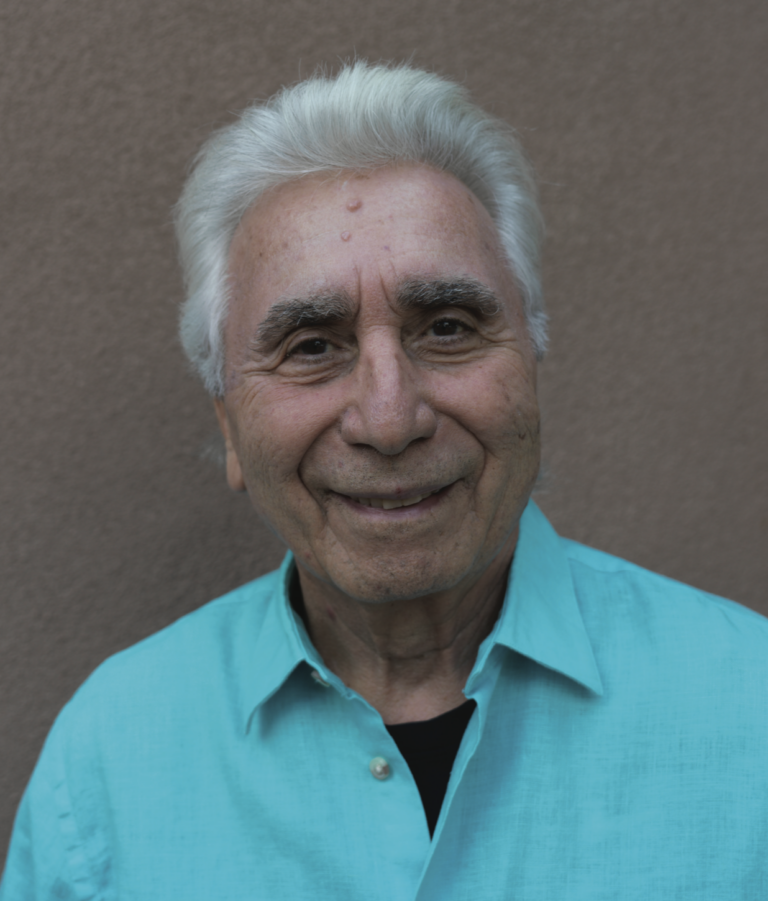THE PAINTING, THE SCULPTURE, THE FILM, THE TEXTILES, the performance art is all obsessed with “invisible history” – the rich and painful experience of African Americans and people of color in the United States. Steeped in historical research, the work is much more an education than a lecture. It even dares, as Nikesha says, “to imagine healing intergenerational traumatic inheritance through art and ritual.”
Nikesha’s own history (she is a descendant of the Mende People of Sierra Leone and of Assyrian American Immigrants from Iran) led her to wander the West and settle in Taos when she was 18. Then, after 20 years of working and researching in New Mexico, she made an incredible discovery.
In your painting, you say you portray “life-size figures in monochromatic realism juxtaposed within rich, textural, often cracked, and organically weathered surfaces and backgrounds.” What does that mean?
I’m interested in the way that these sort of more ephemeral or existential concepts of resilience and unspoken pieces of our history can move into a physical manifestation. My art is trying to translate the untranslatable, unspeakable ways that we carry so many unspoken tensions. And so for me, I intentionally build it into my process.
For example, in my paintings, my surfaces lay out in the weather. I have two right now outside cracking in the morning cold, allowing the spirits of circumstance to play on the surface before I do. So I prepare surfaces and then leave them outside for a long time and see what happens with rain and water and wind and cold and heat – all of the things that we’re affected by all of the time.
Then when I come to it and start to talk to it about historical tension, it’s already cracked, it’s already communicating back to me about what tension looks like, what it looks like to break under pressure or maybe what it looks like to be cohesive, even under heavy duress.
Then you have to put something on it.
I’m a research-based artist. A lot of the choices as to the direction of my work have a lot to do with a simple, conceptual idea that comes through research. My archival portraiture paintings are all based on searching my own family history. Searching back through records and censuses trying to find my family, my ancestral lines. Part of that was trying to find images, but being a descendant of enslaved people, that’s very difficult, if not impossible.
So I began to look into when the first photos were taken in America. I jumped deep into the Library of Congress and searched for the earliest photos of African Americans in the national archive. They turned out to be from the 1850s.
What I found was enlightening: Frederick Douglass was the most photographed man – not just black man – in the mid-1800s because he saw the value in the photographic image to rewrite the stories that were being told about black bodies at that time.
So he would sit regularly for portraits that were strongly crafted to show a new image of a black man. Up to that point, black images were slave photos and cartoons of black people as monkeys. There were no pictures of blacks reading – it was illegal! And there were no pictures of blacks living in a seemingly healthy, accomplished, or stately manner. So Frederick Douglass had lots of portraits taken to change that image.
Sojourner Truth did the same thing. She actually sold her photos to support her speaking tours across the country. Her motto was “I Sell the Shadow to Support the Substance.”
During that time, images of black folks were very curious. All of them are anonymous – they weren’t given names. Even the most stately looking people have anonymous titles: Anonymous Black Woman in Chair, Anonymous Black Man Dressed in a Suit. This is 1850 – this is pre-emancipation America. Who are these people? Where are they from? What are they doing? Who is taking their picture?
This series is about these anonymous African American people with profound stories that we will never know, stories that are a really important part of our history. So I have a cracked tension canvas, and I figure out what body out of my research makes the most sense on it.
The focus of my work is basically historical reclamation, making known invisibilized histories. The same thing shows up in my sculpture – really in every medium, I’m doing the same thing.
You write that your performance art is “your own body to shape itself into the living memory of the diaspora.”
I’ve been a physical artist most of my life – I started as a young acrobat and theater was my big focus. Today, I’m pushing myself into these stories.
A collaborative project that I’m working on right now is called Stages of Tectonic Blackness. We think of tectonics as the deep, profound, foundational structures of our planet. The plates move very slowly, they create massive shifts. So the stages of tectonic blackness is really talking about the way we as black bodies are relating to time and claiming back time, claiming back slowness and non-productivity as a profoundly radical act.
Part of the big racial capital of the world is the work and labor and production of black and brown bodies across the globe. Our value has been historically, intrinsically bound with our production value, and it’s fed into the whole grind culture. It’s constant work, constant production, a constant need to prove value by the amount of work we do. This piece we’re doing is really about reclaiming our body’s relationship to the land and to each other, and it’s about
us moving slowly on the earth outside of the production system. The format is long-form duration rituals, eight- to twelve-hour dances. It’s two dancers, one viola player, and one cinematographer. We are all black or trans or queer.
How did you wind up in New Mexico?
I was traveling through as an 18-year-old. I was living in Colorado and ended up visiting Taos and just fell in love with it. It was like no place I’d ever been.
But the amazing thing is I found out my family is actually from here. My roots are in southern New Mexico, from the first incorporated all-black town called Blackdom.
In 1903, the founders of the town walked from all across the South and East to the open land of New Mexico and established the town. They were looking for a place to be free, to be safe, to create a home, and to build a community based on freedom and education. The Homesteaders Act had recently been passed, and they secured this land right outside of Roswell.
Twenty-five families migrated here through the early 1900s; they collectively owned over 12,000 acres. They had a post office, a schoolhouse, artesian wells, even a baseball team. An entire community.
Then the big water rush happened, and new wells began to be dug throughout the region, and as it dropped the water table drastically; families began to move to more work and opportunities in the nearby towns. Racial politics and various roadblocks slowly set the town back. By 1930, it was gone.
My family was from Blackdom, they were part of the community. Of course, when I found out I wanted to go there. I wanted to perform on that land! I felt like I had to find it. What I discovered was that all of the buildings were removed and it was emptied. What is left of the center is considered state land today, landlocked by oil ranchers and bankers.
I worked with NMSU and the state and county, and over this past year we gained easement access to the original 40-acre plot where Blackdom thrived. The place is filled with artifacts, pottery shares, cornerstones, and pieces from the original homes. When we were there, my collaborators – MK, Miles Tuknow, and Lazarus Nance Letcher – performed an eight-hour mourning ritual, dance, and prayer. It was filmed by MK; the resulting immersive installation is a breathtaking view into an African American heritage site. It’s a true ruin of a town that nobody knows about. Right here in New Mexico! Now that’s invisible history.
Learn more at nikeshabreeze.com
Photo Mary Moon

